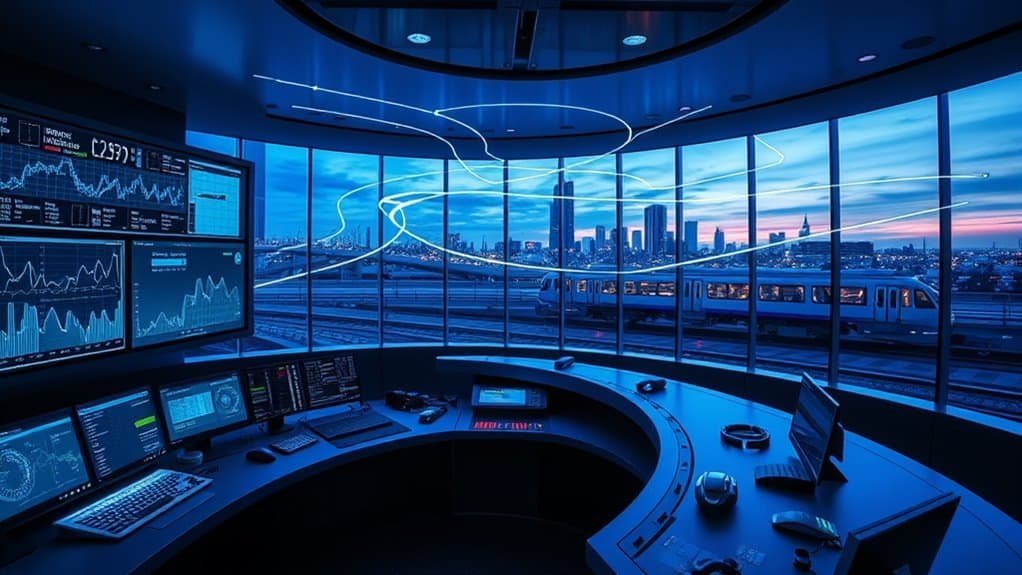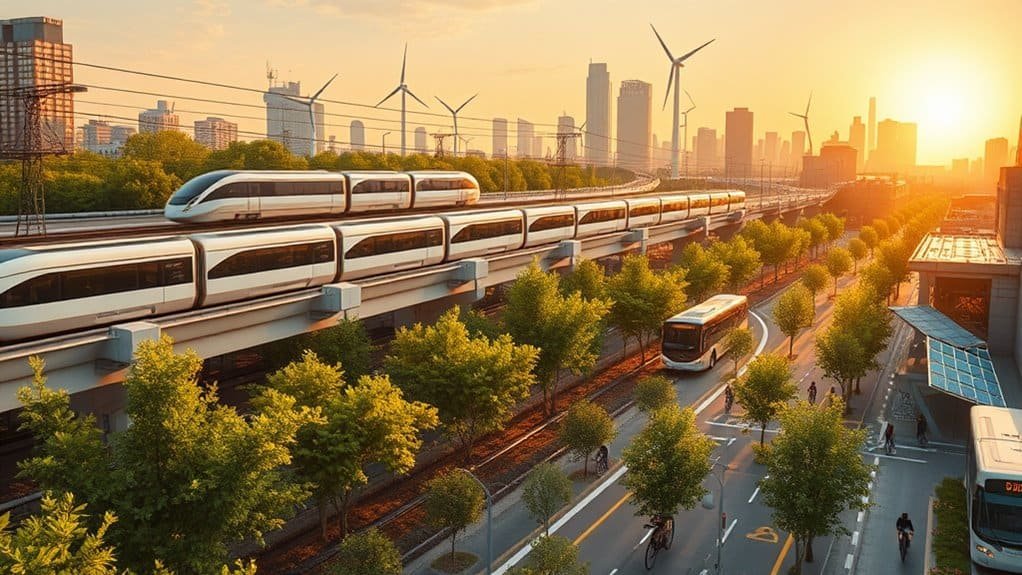Yearly Transit Predictions for 2025

By 2025, transportation will transform with autonomous vehicles reducing parking stress and improving safety. Smart public transit will offer real-time updates and easy payments, enhancing commutes. Sustainability will promote biking, walking, and eco-friendly transit, benefiting the environment. Efforts to address urban congestion and climate change will improve transit reliability. Exciting changes await in the near future!
The Rise of Autonomous Vehicles

By 2025, autonomous vehicles will revolutionize commuting and transportation.
Imagine self-driving cars that efficiently reduce traffic and travel time. Parking worries will vanish as these cars drop you off and park themselves.
Enhanced safety features will significantly lower accident rates. Embrace ride-sharing with autonomous vehicles for easier, eco-friendly commutes.
Prepare for a smoother, stress-free travel experience!
Smart Public Transportation Systems
By 2025, smart public transportation systems will transform city navigation.
A mobile app will offer real-time bus and train schedules, enhancing trip planning. Integrated payment options will allow quick ride payments.
Smart sensors on vehicles will optimize routes, reducing wait times. Improved accessibility features will make travel easier for all.
These advancements will enhance your commuting experience, making it more convenient and enjoyable.
Sustainable Transit Practices

Sustainable transit practices are crucial for transforming urban travel.
Opt for biking, walking, and electric public transport to reduce your carbon footprint and improve air quality.
Carpool or use ride-sharing apps to minimize vehicle emissions.
Community efforts, like adding bike lanes, encourage participation.
Support local businesses that prioritize sustainability.
Every small action helps create a healthier planet and a more sustainable urban experience for everyone, so start today.
Addressing Urban Congestion
Tackle urban congestion with proactive strategies: use public transport to reduce road traffic, carpool to save money and cut down on cars, bike or walk for short trips to benefit health and the environment, and avoid peak travel times if possible.
These small changes can greatly ease city congestion and improve commutes.
Climate Change and Its Impact on Transit

Cities face the dual challenge of reducing congestion and addressing climate change, which affects public transit systems.
Rising temperatures can damage infrastructure, and extreme weather disrupts service. Advocate for sustainable practices like electric buses and improved bike lanes to cut emissions.
Engage with local officials to enhance green transit options and promote community awareness.
Every effort contributes to a more sustainable and resilient transit system, tackling climate change directly.
Ensuring Equitable Access to Transportation
Improving transit systems while ensuring equitable access is crucial for all communities. Advocate for public engagement in transit planning to include diverse voices.
Support initiatives for affordable fares and accessible routes, especially for marginalized groups. Attend local meetings to improve services in underserved areas.
Collaborate with community organizations to raise awareness about available transportation options. By working together, you can help create an inclusive transit system that serves everyone, ensuring no one is left behind in their daily journeys.
Frequently Asked Questions
How Will Transit Predictions Affect Job Opportunities in Transportation Sectors?
Transit predictions can greatly impact job opportunities in transportation sectors. You’ll find that emerging technologies and evolving demands create new roles, while traditional positions may shift, requiring you to adapt and develop new skills to stay competitive.
What Role Will Technology Play in Enhancing Transit Safety?
Imagine a world where technology’s your trusty shield. It’ll enhance transit safety by integrating real-time monitoring, predictive analytics, and smart communication systems, ensuring you travel confidently while minimizing risks and improving overall transportation efficiency.
How Can Individuals Prepare for Upcoming Transit Changes in 2025?
To prepare for upcoming transit changes, stay informed about local updates, adapt your travel routines, and embrace new technologies. Engaging with community discussions can also help you understand and navigate these changes effectively.
What Are the Expected Costs of Implementing New Transit Technologies?
Implementing new transit technologies often involves substantial costs, including research, development, and infrastructure upgrades. You’ll find that these expenses can vary widely, but investing now can lead to long-term savings and improved services for everyone.
How Will Transit Predictions Influence Urban Planning and Development?
Transit predictions shape urban planning by guiding infrastructure investments, optimizing routes, and enhancing accessibility. You’ll see cities adapting designs to accommodate emerging technologies, ultimately improving your commute and promoting sustainable growth in your community.
Conclusion
In 2025, transit innovation promises a bright future. Cities with smart transit systems report a 30% drop in congestion, showing technology improves travel.
Supporting sustainable practices and equitable access can build a transportation network for all. Let’s advocate for these changes and embrace a more connected, efficient future.
